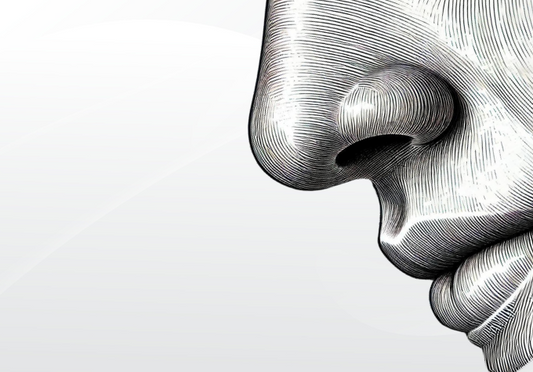We’re a team of engineers, neuroscientists, and artists from UC Berkeley and Ilmenau University of Technology that summarize neuroscience studies. We then propose our own theories and experiments to enhance the study, advancing our mission to maintain and maximize human cognitive performance to help people sleep, focus, and relax.
Imagine walking down a familiar street, and as you pass by a bakery, the warm scent of freshly baked bread pulls you into a flood of childhood memories. Or perhaps a song on the radio instantly transports you to a moment you thought was long forgotten. Have you ever wondered why certain smells, sights, or sounds can instantly transport you to a different time and place? It’s a phenomenon that has puzzled scientists for years. How does a simple scent or a particular pattern of light trigger such powerful and specific memories? The answer, it turns out, lies in the intricate dance between our sensory experiences and the brain’s chemistry, particularly the role of oxytocin, often dubbed the “bonding happiness hormone”, in memory formation. These vivid recollections are not just random occurrences but evidence of how our brains are wired to connect sensory experiences with memories. But what if there was a way to harness this natural ability, making our memories sharper, more vivid, and longer-lasting?
What did the experiment discover?
In a recent study published in Nature Communications, Dr. Wolf’s team at the University of Heidelberg explored this very question. They were intrigued by the possibility that oxytocin could play a pivotal role in forming and enhancing memories. To investigate, they conducted a series of experiments with mice, exposing them to different scents and light patterns while administering oxytocin to them.
Suddenly, the mice showed a substantial improvement in their ability to recall, with their memory responses significantly enhanced. The researchers observed up to a 50% increase in neuronal response and information retention when oxytocin was present. This means that oxytocin doesn’t just help us form memories; it strengthens them, making them more resilient and easier to recall.
How does oxytocin enhance memory?
Picture your brain as a vast network of highways, where neurons are the cars zipping along, carrying messages from one place to another. Every experience you have, whether the scent of freshly baked bread or the melody of a favorite song, sends these neurons into action, forming connections that encode the memory of that moment.
Now, oxytocin enters the scene as a kind of supercharger for these neural highways. When oxytocin is released into the brain, it enhances the strength of the connections between neurons, a process known as synaptic plasticity. This plasticity is crucial for memory formation because it makes the pathways between neurons stronger and more efficient—like upgrading a dirt road to a superhighway.
In Dr. Wolf’s study, the researchers discovered that oxytocin didn’t just assist in forming new memories; it made those memories more robust and easier to retrieve later. By releasing oxytocin while exposing mice to specific scents and light patterns, the team observed a significant boost in the animals’ ability to recall these experiences. This discovery sheds light on how memories are formed and retained, offering exciting possibilities for enhancing memory in everyday life and providing new avenues for treating cognitive decline.
Why this research is a game-changer
So, why does this matter to you? The ability to strengthen and reinforce memories isn’t just a fascinating scientific discovery—it has real-world implications that could touch every aspect of our lives. Here’s why this research is such a big deal:
- Improved Memory Retention: Imagine being able to enhance your memory, making it easier to recall important information, whether it’s for work, study, or daily life. This could be particularly beneficial for those experiencing memory loss or cognitive decline, offering new hope for maintaining mental sharpness.
- New Avenues for Treatment: By targeting the brain’s natural memory-enhancing mechanisms, we could develop more effective and less invasive methods than current options.
- Harnessing the Power of Light: Light stimulation, one of the key methods of inducing oxytocin within mice, is already used in various treatments, from addressing seasonal mood struggles to improving sleep patterns. Imagine breaking the code of how specific light patterns could boost memory, much like certain scents trigger vivid recollections.
- Methods of boosting Oxytocin: Here’s how various natural methods can help induce oxytocin in humans, potentially offering new ways to improve memory and mood:
- Light stimulation: Light stimulation, particularly in specific wavelengths, has been shown to increase the release of oxytocin, a hormone associated with bonding and stress reduction. Research indicates that exposure to certain types of light can lead to a significant increase in oxytocin levels, with some studies reporting up to a 60% rise in oxytocin release in specific contexts.
- Social Connections: Spending quality time with loved ones can naturally increase oxytocin levels. Whether it's sharing a laugh or simply having a heartfelt conversation, these social interactions foster emotional bonds that can enhance memory and overall well-being.
- Physical Touch: Engaging in physical touch, such as holding hands, hugging, or even getting a massage, can significantly boost oxytocin levels. This natural method helps strengthen the emotional connections and memories formed during these intimate moments, making them more memorable and impactful.
- Mindfulness and Meditation: Practices like mindfulness and meditation can support the natural production of oxytocin by promoting relaxation and emotional balance. These calming techniques help manage stress and enhance the clarity and retention of positive memories.
How does light and oxytocin together induce these reactions?
Researchers are excited about the potential of combining oxytocin with light stimulation for several reasons. Here are some of the theories that could explain why this combination might be so effective:
- Strengthening Neural Connections: One theory is that oxytocin enhances the connections between neurons, improving the brain's ability to encode and recall memories. Imagine it as upgrading the brain's communication network, making memory pathways more robust. This improved connectivity could further enhance memory formation and retrieval when combined with light stimulation, which targets specific memory-related brain regions. Exposure to different light flicker frequencies may amplify oxytocin's effects, facilitating the brain's ability to form and retain memories more effectively.
- Synchronizing Brain Rhythms: Another intriguing theory involves the synchronization of brain rhythms. The brain operates using electrical rhythms that are crucial for various cognitive functions, including memory. Light stimulation, especially at specific frequencies, has been shown to help synchronize these brain rhythms, improving cognitive functions by ensuring that different brain regions work together more effectively. Oxytocin can complement this process by maintaining or restoring these rhythms. When combined, light stimulation and oxytocin enhance synchronization, optimizing the brain’s natural rhythms and making memory encoding and retrieval more effective.
- Reinforcing Emotional Memories: Oxytocin is closely tied to social bonding and emotional experiences, which are known to make memories more vivid and lasting. When we experience strong emotions, the memories associated with these emotions tend to be more intense and enduring. This is partly because oxytocin helps reinforce the emotional significance of these memories. Light patterns could potentially amplify this effect by enhancing the emotional aspects of memories. For example, specific light frequencies might trigger or reinforce the emotional content associated with certain memories, making them more vivid and easier to recall. This combination could be particularly powerful in therapeutic settings, where enhancing emotional memory could aid in treatments for trauma or other emotional issues.
What does mean for us?
So, what does this mean for you? The breakthroughs in oxytocin and light’s effects on memory open up exciting possibilities for boosting cognitive health. Whether aiming to sharpen your memory or seeking new remedies for cognitive decline, this research offers a hopeful preview into a memory-filled future.
As we explore the dynamic link between hormones, light, and memory, it’s clear that the future of cognitive enhancement is full of potential. Stay tuned as we dive deeper into these discoveries and uncover more about how they could transform your mental well-being.





